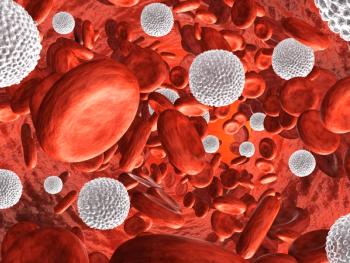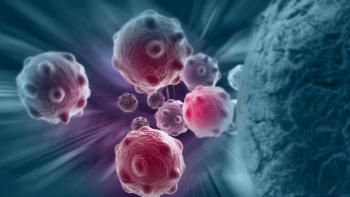
- ONCOLOGY Vol 13 No 3
- Volume 13
- Issue 3
Rituximab Therapy in Previously Treated Waldenström’s Macroglobulinemia: Preliminary Evidence of Activity
Waldenström’s macroglobulinemia is a rare, low-grade lymphoproliferative disorder for which few therapies are effective. Although patients with Waldenström’s macroglobulinemia often are reported with cases of small lymphocytic lymphoma, this disease has characteristic lymphoplasmacytic histology, bright CD20 expression, and IgM paraproteinemia. Rituximab (Rituxan) is a chimeric anti-CD20 monoclonal antibody that produces a 50% response rate in previously treated low-grade lymphoma, but has no previously described efficacy in the Waldenström’s macroglobulinemia subtype. We report 7 patients with Waldenström’s macroglobulinemia treated on clinical trials performed by IDEC Pharmaceuticals (N = 6) or at our institution (N = 1). Characteristics of these patients included a median age of 60 years (range, 50-75 years) with 5 being female. All patients were symptomatic, with a median performance status of 1 (range, 1-3), with all having measurable disease independent of paraproteinemia.
Waldenströms macroglobulinemia is a rare, low-grade lymphoproliferative disorder for which few therapies are effective. Although patients with Waldenströms macroglobulinemia often are reported with cases of small lymphocytic lymphoma, this disease has characteristic lymphoplasmacytic histology, bright CD20 expression, and IgM paraproteinemia. Rituximab (Rituxan) is a chimeric anti-CD20 monoclonal antibody that produces a 50% response rate in previously treated low-grade lymphoma, but has no previously described efficacy in the Waldenströms macroglobulinemia subtype. We report 7 patients with Waldenströms macroglobulinemia treated on clinical trials performed by IDEC Pharmaceuticals (N = 6) or at our institution (N = 1). Characteristics of these patients included a median age of 60 years (range, 50-75 years) with 5 being female. All patients were symptomatic, with a median performance status of 1 (range, 1-3), with all having measurable disease independent of paraproteinemia.
Patients were heavily pretreated, having received a median of three (range, one to four) prior therapies for their Waldenströms macroglobulinemia. Prior therapy had included an alkylator in all patients (5 refractory) and fludarabine in 4 (all refractory), with 5 being refractory to their last therapy. Pretreatment laboratory features included a mean serum IgM of 2.9 g/dL (range, 0.72-6.28 g/dL); leukocyte count, 5.1/cm³ (3.0-6.6/cm³); hemoglobin, 10.5 g/dL (8.6-13.4 g/dL); and platelets, 219/cm³ (32-332/cm³).
All patients received rituximab (375 mg/m²) weekly for 4 weeks (N = 6) or 8 weeks (N = 1) . Therapy was well tolerated, with five patients having infusion-related toxicity (four grade 1/one grade 3) during the first therapy. Cellular immune function, as measured by mean CD4 lymphocyte counts (pretreatment, 344/mm³ vs 3 months posttreatment, 331/mm³; P = .89) and mean CD8 lymphocyte counts (pretreatment, 608/m³ vs 3 months posttreatment, 654/mm³; P = .32) were not significantly altered by rituximab therapy. Corresponding with this was the absence of opportunistic infections and only one posttherapy grade 3 bacterial sinusitis.
Responses, as assessed by at least 50% reduction in all measurable disease (non-Hodgkins lymphoma partial response) occurred in four (57%) patients, while a 50% reduction in paraproteinemia (Waldenströms macroglobulinemia partial response) was noted in three (43%) of these same patients. The median progression-free survival for these seven patients was 8 months (range, 3-27+ months).
CONCLUSION: These preliminary data suggest that rituximab has clinical activity in pretreated Waldenströms macroglobulinemia without decrements in hematologic or cellular immune parameters that are commonly noted with other therapies employed in this disease. Based on these data, future studies utilizing rituximab in both previously treated and untreated Waldenströms macroglobulinemia appear warranted.
Articles in this issue
almost 27 years ago
WHO Declares Lymphatic Mapping to Be the Standard of Care for Melanomaalmost 27 years ago
Navelbine Increased Elderly Lung Cancer Patients’ Survivalalmost 27 years ago
Consensus Statement on Prevention and Early Diagnosis of Lung CancerNewsletter
Stay up to date on recent advances in the multidisciplinary approach to cancer.

















































































